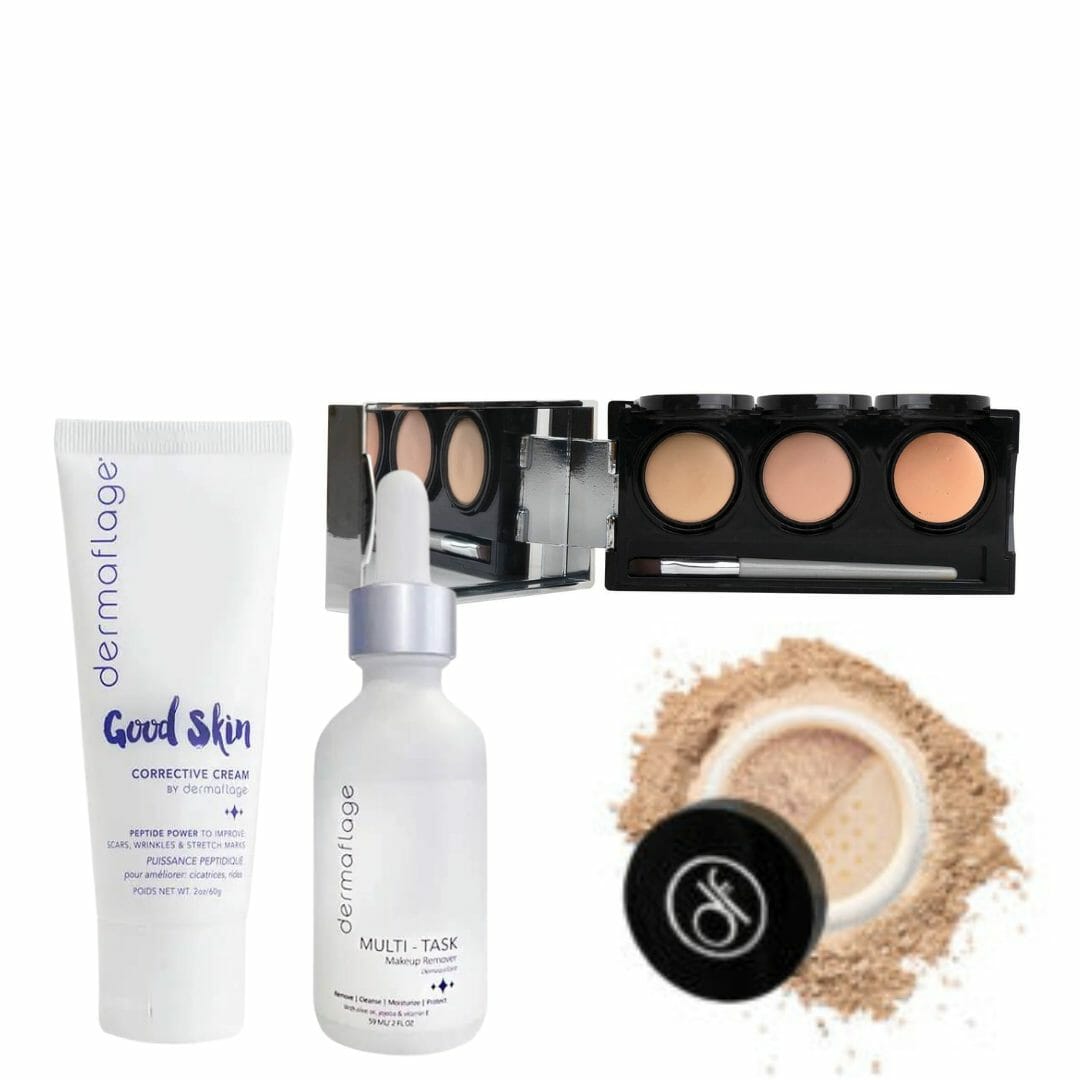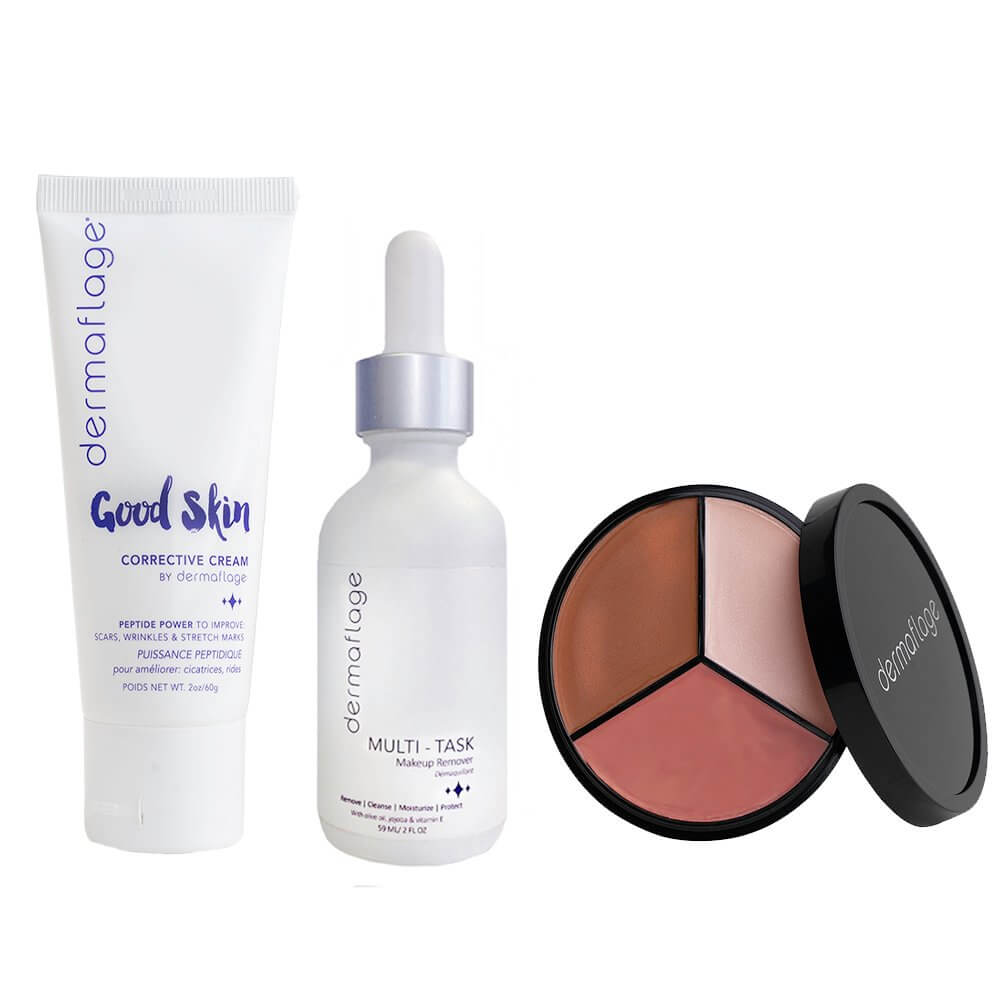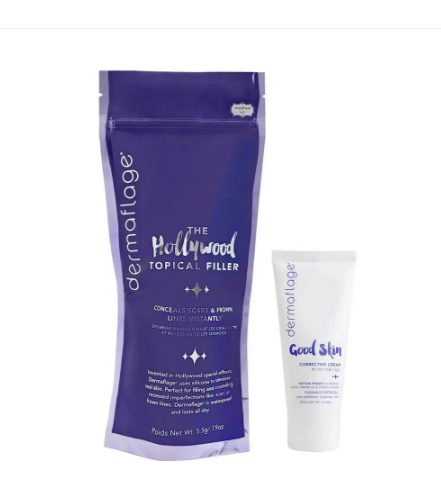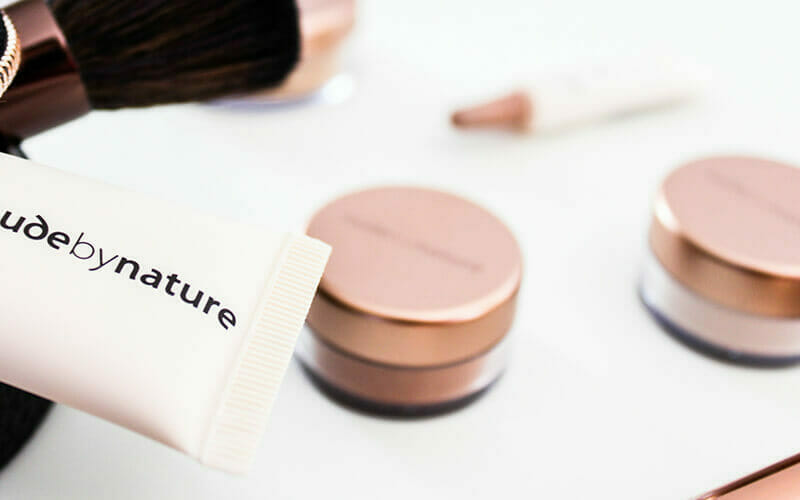
Camera Ready Makeup To Cover Acne Marks
When it comes to choosing makeup to cover acne marks, does colour correction live up to its hype? In a word, yes. While we believe it’s important to embrace your own natural beauty, there are times and events — like a stage performance, your prom, graduation, or wedding – that call for taking your look up a notch or two. These are the moments when you want your skin to look flawless in person and in the photographs you’ll keep forever, and this is where colour correction truly shines. So even if your usual routine doesn’t include much time and effort in hiding flaws, now is the time to use the best makeup to cover acne scars, blemishes and other marks. Thanks to colour correction makeup, you don’t have to be a professional makeup artist to create a picture-perfect look. If you’ve been afraid that your scar will steal your spotlight (or your confidence) on your big day, read our guide to camera-ready colour corrector for acne marks.
What is Color Correction Makeup?
Color correction makeup to cover acne marks and other discolouration is a longtime makeup artist secret for film and photo shoots that’s turned into a huge beauty trend. It’s based on the concept of using contrasting hues to “cancel out” discolouration caused by acne, scars, blemishes, birthmarks, and other pigmentation issues. Now, a category that once consisted of yellow concealer has exploded into a race for beauty brands to launch a wide array of colour-neutralizing liquids, sticks, powders, and multi-hued cream palettes. Available in a kaleidoscope of shades from yellow to green, lavender, orange and peach, colour correction makeup goes beyond basic concealer to achieve the look of flawless, even, glowing skin in an instant without adding more layers of makeup. This unique ability to make your skin look unbelievably perfect yet “undone” is what makes colour correctors ideal for wedding day makeup and other special events.
Why You Should Try It
- Your skin will still look like skin, which should always be the goal. Though it’s counter-intuitive, adding colour correctors to your beauty routine lets you use less of your usual products like foundation and concealer to achieve a full-coverage result. Color correctors create a smooth, perfectly even canvas without a heavy, cake-y makeup look.
- It’s simple and quick enough to use everyday as well as for special events. Don’t be intimidated by the extreme way that colour correction is being shown in some of the video tutorials sweeping the beauty world. There is plenty of information that’s beginner-friendly and appropriate for real life. Once you’ve mastered the basic technique, you’ll wonder how you ever lived without these candy-coloured skin fixers.
- You can fake your way to a healthy, glowing, complexion. If you’ve noticed that using one shade of makeup on your whole face to cover acne scars is making you look washed-out, flat, or mask-y, you’ll be surprised at how the right colour correctors bring your skin to life. This is the key to skin that looks just as perfect in real life as it does on camera and in every type of lighting.

Color Corrector for Acne Marks – How it Works
- Swirling shades of green and purple all over your face may look complicated, but the concept of colour correction is as basic as the standard colour wheel beloved by elementary school art teachers everywhere. The bottom line? Two colours on opposite sides of the colour wheel “cancel out” or neutralize each other when mixed together. Bonus points if you’ve read our colour wheel intro.
- Color correctors come in different formulas of makeup to cover acne scars that can be used on top of the marks – including creams, powders, sticks – or in liquid drops that can be mixed into your moisturizer, primer, or other makeup to spread over large areas of discolouration such as sallowness or rosacea. The corrector is used along with your regular foundation or concealer – if you even need it.

If you’re not sure what colour will correct your skin issue, we have simplified it for you.
Color Correction Cheat Sheet
- The Beige Basics — If you’ve got light-coloured marks or minor imperfections, (lucky you!), then a natural, flesh-toned concealer may work well enough for everyday. You’ll need a scar concealer in an exact match for your skin tone or a shade lighter or darker depending on the type of scar you want to cover. Check out our tips on makeup for scars for more details.
- When to Reach for White — While multi-coloured camouflage makeup palettes may include a white concealer, be aware that these are much better for highlighting areas of your face – like the upper cheekbones and down the bridge of your nose – than for using under the eyes or to cover up scars.
- Green – Directly across from red on the colour wheel, green concealer neutralizes redness and is among the best makeup to cover acne scars as well as blemishes, rosacea, and any other redness on your face such as around your nose or between your brows.
- Yellow — Opposite purple on the colour wheel, yellow concealer corrects purple or blue-ish scars and under eye circles. Yellow is also an all-purpose and idiot-proof colour to camouflage minor imperfections and dull skin. Yellow tints are often found in yellow-based foundations as well as other formulas like primer that can be applied pre-foundation for overall brightening.
- Lavender – Positioned across from yellow on the colour wheel, shades of purple, lavender or lilac cancel out yellow or sallow tones on your skin. Use purple colour correctors to give pasty skin a healthy-looking, luminous glow. Lilac loose powder in particular can bring dull skin back to life.
- Peach or Orange – Opposite from blue on the colour wheel, orange concealers are best suited for darker skin tones, to cover deep discolouration from dark acne scars, sunspots, and under eye circles. For light to medium skin tones, colour correctors in peach are super-effective at camouflaging sun damage, under eye circles, freckles, and other areas of hyperpigmentation. Because peach is actually a mix of red, orange and yellow, it’s a multi-tasking corrector that neutralizes the blue, purple and green hues on the opposite side of the colour wheel, making it a “best buy” for a range of skin issues and as a general brightener for your whole complexion.
- Extra Credit: Bronze – Take a tip from professional makeup artists and use a bronzer as a sheer colour corrector to create shading without covering up your skin. Avoid any orange tones and use a shimmer-free, medium-toned bronzing powder to add a bit of natural-looking warmth and depth to your face without going into full-on contouring territory.

Don’t Forget about Surface Correction
For the ultimate camera-ready confidence, Dermaflage offers a Color Corrector for Acne Marks and a Topical Scar Filler that temporarily “resurfaces” the uneven skin caused by recessed or indented scars. It fills in and raises the shadowy area that regular scar concealers can’t effectively smooth out. Not only does it invisibly cover even the most difficult-to-hide scars like boxcar scars and acne icepick scars, it’s waterproof, smudgeproof, and lasts up to 36 hours, so you can enjoy your big day without worrying about the need for touch-ups or reapplying. You really have to see it to believe it.
Perhaps most importantly, your skin will actually look like real, skin in your photos instead of like layers of makeup, thanks to Dermaflage’s ability to move with your skin and mimic its exact colour and texture. Here is the story on how Dermaflage works.
How the Pros Cover Up Scars
Using makeup to cover acne scars may take a bit of practice, but professional makeup artists break it down into the basics:
- Only colour correction makeup for under eye circles should be applied after your foundation. This method keeps the coverage from being wiped away or smudged during your foundation application.
- Color correction makeup to cover acne scars and other discolouration should be applied before your foundation and regular concealer. Once you’ve neutralized the colour issue, you may not need to use as much of your other coverage products.
- Give colour correctors time to “set” after you apply them. Let it dry for a couple of minutes, then apply your foundation and concealer on top, if you still need it. Dabbing your other products on with a sponge or stippling brush will keep you from wiping away the corrector underneath.
Look Like You, But Better!
Although the products may look rainbow-bright in their packages, the results of colour correction look surprisingly natural. The best part is that it can cover up scars completely but allow you to use less makeup. It’s an ultra-effective method that can achieve a low-key, “no makeup” look or create a perfectly even canvas to build a dramatic makeup statement. Whether you want classic bridal beauty for your wedding, an all-out glam look for your prom makeup, or simply want to look paparazzi-perfect every day of the year, colour correction lives up to its hype of creating the look of flawless, perfectly even skin no matter how much you’ve got to hide.
So now there’s no excuse for caking on layers of concealer when what you really need is colour correction makeup to cover acne scars. Embrace your inner makeup artist and try colour correction for an instant skin fix!
— Aimee from Dermaflage
P.S. Want to learn more about scars? Click below for Scars Made Simple E-book to learn how to heal, treat, and conceal scars.
[leadpages_leadbox leadbox_id=1401b6846639c5] [/leadpages_leadbox]













Leave a Reply
You must be logged in to post a comment.